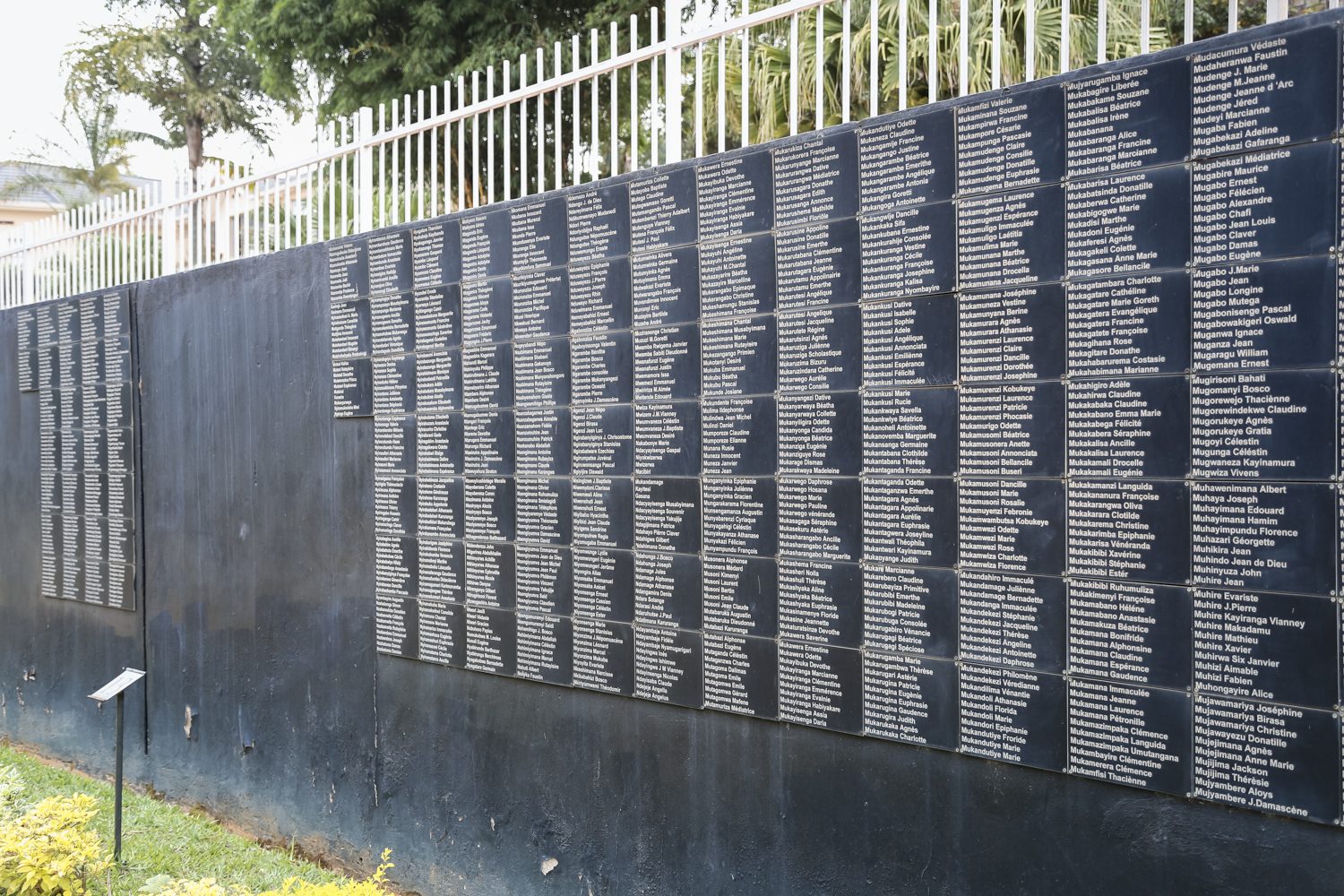With events spanning from the ancient world to modern Africa, museums are an important legacy for understanding where we are today.
The Apartheid Museum in South Africa

The system of apartheid, which was introduced in South Africa in 1948 as a form of governance, called for the separate development of the country’s different racial groups. Apartheid laws forced different racial groups to live and develop separately, causing gross inequality among citizens.
People of colour were negatively affected by apartheid laws as they bore the brunt of inequality, being kept just above destitution as they the laws took away their rights to own land and to access adequate economic opportunities among others. The state enforced laws through police and military means, often punishing those who disagreed with its policies harshly.
The injustice of apartheid resulted in many resistance groups, most notably the African National Congress (ANC) and other resistance groups such as the Pan-Africanist Congress (PAC), the Inkatha Freedom Party (IFP) and the Black Consciousness Movement (BCM) working towards toppling apartheid to introduce a free and fair form of governance that respects the human rights of all.
Some significant events that took place in the fight against apartheid governance include the 1961 Sharpeville massacre, where 69 people were killed and many more injured in a shootout with police as protesters marched to the local police station to protest against the country pass laws which required all black South Africans to carry a form of identification at all times or face detention.
Another significant event is the 1976 Soweto uprising in which students were shot by police when they marched to Orlando Stadium in Soweto to protest against the use of Afrikaans as the main medium of instruction in school. Bantu education was an education of poorer quality designed to keep black South Africans at the lowest intellectual tier of society.
The apartheid museum, which is located in Johannesburg, houses artifacts of the apartheid era, including overall history on the country from the discovery of gold in South Africa in 1886. Visitors are able to see how apartheid affected all facets of life, from the economy to families and how people of different races were treated differently by the law and how the separatist ideology affected how people of different races were treated in society.
Kigali Genocide Memorial in Rwanda

In April 1994, after rising tensions between the majority Hutu ethnic group and the minority Tutsi group, an airplane carrying then President Juvenal Habyarimana, and his counterpart Cyprien Ntaryamira of Burundi, both Hutus, was shot down, killing everyone on board. Hutu extremists saw this as an attack from the Tutsi rebel group, the Rwandan Patriotic Front (RPF), sparking the genocide that would see as many as 800,000 people, mostly Tutsis, being killed by Hutu extremists in the capital Kigali.
The fighting spread across the nation when ordinary citizens were incited by local officials and the Hutu Power government to take up arms against their neighbors, leading to mass brutality and death. As many as 2 million people were displaced from their homes, feeling to neighbouring countries, exacerbating what had already become a full-blown humanitarian crisis. The genocide ended when the Uganda-backed RPF took control of Kigali, pushing out civilians and extremists involved in the genocide.
The Kigali Genocide Memorial, also known as the Rwanda Genocide Museum, is the final resting place for those who lost their lives as a result of the genocide. It is located in Gisozi, Kigali, and it honours their memory through education and peace-building.
The National Slavery Museum in Angola

The transatlantic slave trade occurred between the 15th and 19th centuries, with Angola being the primary destination for slaves for the Portuguese and their contacts in the colonial world. People shipped off as slaves from Angola to various destinations across the world ranges between 13 and 100 million. Local Angolan kingdoms, such as the Ndongo, Matamba and Kassanje, took part in the slave trade from the 16th to the 18th centuries, with kingdoms like the Matamba growing in power and wealth as a result of the trade while kingdoms like the Kassanje disappearing as its citizens were captured as slaves.
In the 1600s when the Portuguese Empire conquered the Mbundu people, those captured where shipped off as slaves from the newly created port in Benguela. By the end of 1621, approximately 50,000 people were shipped off to colonial territories. Soon, the slave trade with the Portuguese colony of Brazil became profitable for both locals and the Portuguese, with the busiest ports being in Luanda and Benguela. During the 17th century, the Mbangala were armed by the Portuguese with arms captured and sold natives on a far larger scale, growing in wealth and power. The slave trade was declared illegal in 1836, however illicit trade continued well into the 1880s.
The National Slavery Museum in Luanda, Angola, which was founded in 1997 to commemorate the many Angolan slaves that endured torture and mass murder during the transatlantic slave trade, contains collections of artifacts that explain how slaves were captured and treated and provides more insight into those benefitted from the trade. It also provides more insight into the broader colonial world slave trade.
Pyramids of Meroe in Sudan

The city of Meroe in Sudan’s Nile Valley is home to the Nubian pyramids that were part of the Kingdom of Kush, which are about 220 in total. They are the burial sites for more than 40 Nubian kings and queens who led the Kushite kingdom that rose to power and affluence in 1000 BC, after the fall of the 24th Egyptian Dynasty. The pyramids hold rich history of pharaohs and deities that existed in the Kushite Kingdom. The pyramids found are of prominent pharaohs such as King Tanutamun, who was a 17th-century BC monarch, King Kashta, his son King Piye and many of the kingdom’s warrior queens.
Throughout the years, some of the pyramids have been partly destroyed by being plundered by humans wanting to steal wealth inside the tombs. Mostly notably, Italian explorer Guiseppe Ferlini smashed the tops of 40 pyramids between 1800 and 1870 to find treasure hidden inside. He was later found, and the Meroitic writings and reliefs depicting historical events were brought back to British and German museums.
The pyramids receive few visitors due to their far off location from the capital Khartoum, and are managed by locals from nearby villagers who seek to protect their history.
Benin City National Museum

The ancient Benin Empire was one of Africa’s oldest and most developed kingdoms until it was invaded by the British in 1897. According to tradition, the Edo people became dissatisfied with the rule of a dynasty of semi-mythical kings, the Ogisos, and thus invited Prince Oranmiyan of Ife to ascend the throne.
The prince’s son Eweka is considered as the first king, known as an oba. In the 1400s, Ewuare the Great, who was a magician and warrior, ascended to the throne and established a hereditary succession to kingship. He expanded the territory of the Benin kingdom to extend from the Niger River delta to modern day Lagos in Nigeria.
Oba Ewuare is credited with turning the Empire into a powerful military fortress of western Africa. The empire developed advanced artistic creations made of bronze, iron and ivory that was commonly created for various royal ceremonies. Artworks included bronze wall plaques and life-sized bronze heads of the Obas of Benin, with the most common artifact being based on Queen Idia. The empire grew in wealth during the 16th century due to lave trade with Europe as they sold off their war captives.
The empire built a strong mercantile relationship with Portugal in the 1400s, and the two nations traded tropical goods, slaves and European goods and weapons. The English formed a relationship with the empire in the 1500s, trading in ivory, slaves and other goods, with visitors going back to Europe to tell tales the great empire. The empire began its decline in the 1800s after the slaying of eight British representatives in Benin territory due to diplomatic disputes.
The British retaliated with a punitive expedition where British forces conquered and burned the city, destroying much of the country’s treasured art and dispersing nearly all that remained. The Oba is still in existence today, and is very much respected in Nigeria as he most revered traditional ruler. His powers are largely ceremonial and religious.
Benin City National Museum is located in Benin City, the capital of Nigeria’s Edo State, and houses the history and art collection of the ancient Benin Empire. The museum houses a number of ancient Benin artworks, including brass belt masks which were worn by chiefs and brass and ivory armlets and bracelets, which were also worn by members of royalty.











